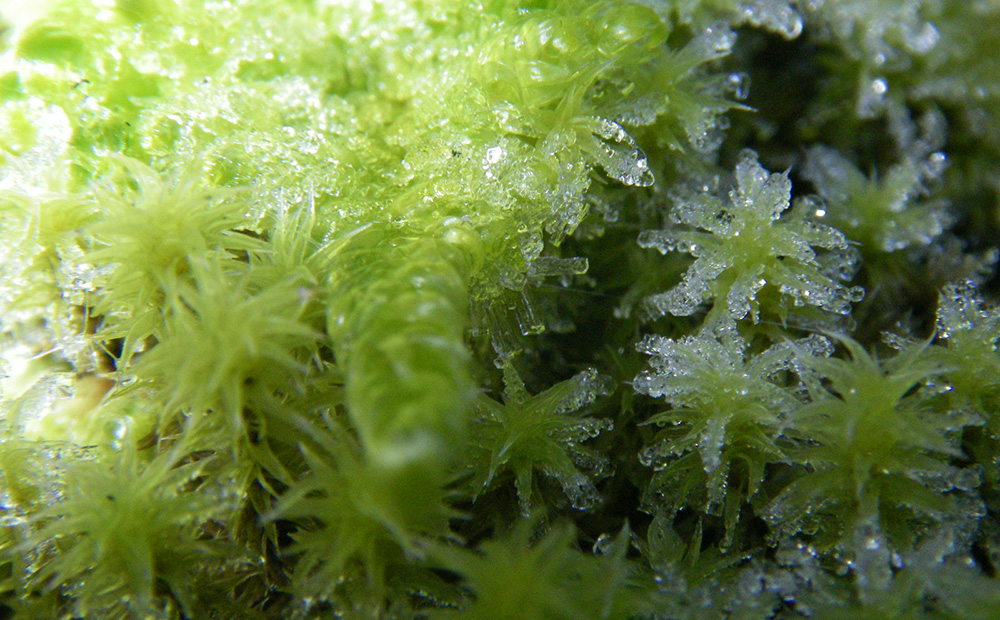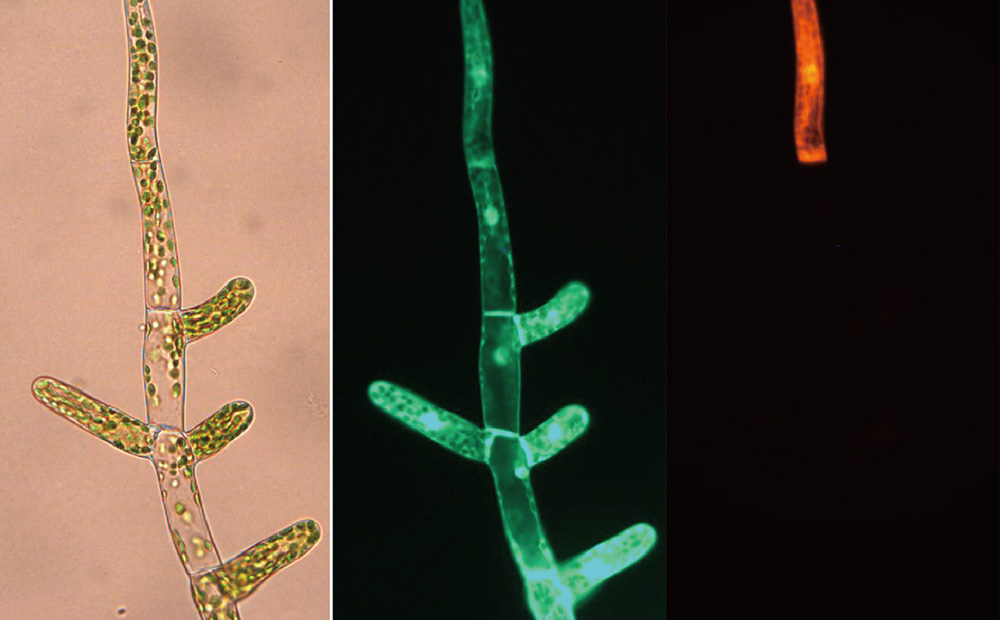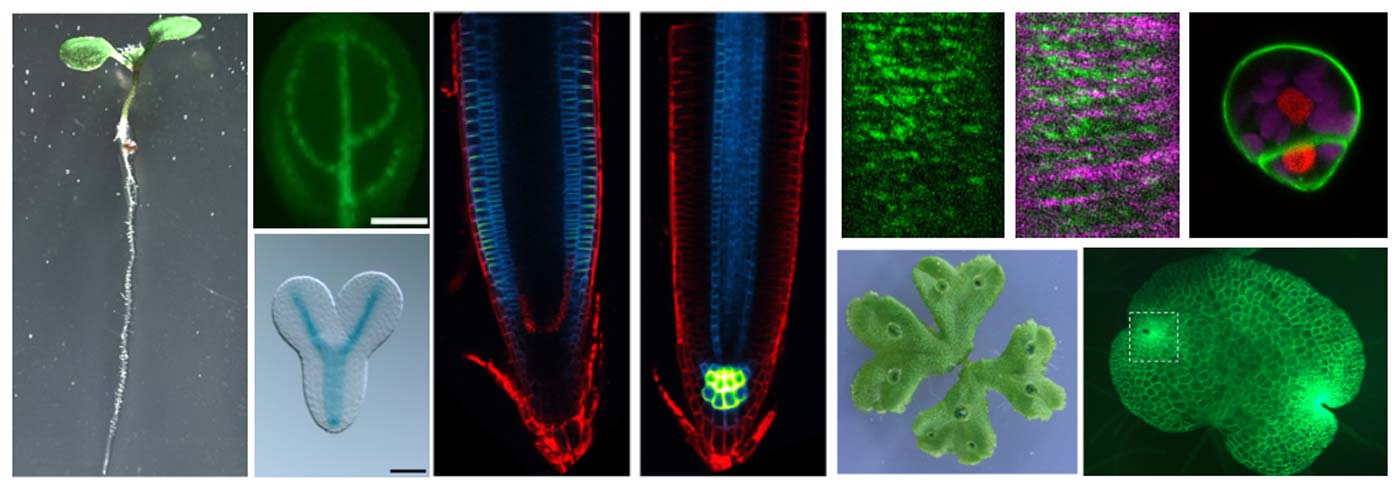Here are some of the topics currently underway or available for research in our laboratory.
Please feel free to contact us with any inquires relating to clarifying the mysterious and wonderful abilities of plants and plant cells.

Department of Biological Sciences,
Faculty of Science, Hokkaido University
- Evolutionary and Developmental Biology in Plants
How do plants differ from animals?


Why do plants have totipotent cells and remarkable regenerative abilities? How do plant cells avoid becoming cancerous, despite their ability to keep dividing infinitely? Can we find a way to apply the hidden potential of plant cells to our animal cells?
Plants support the ecosystem of Earth as primary producers, provide healthful food and healing compounds, and are our indispensable partners. How do plants sense, respond and grow based on changes in their surroundings? How does evolution change their developmental programs and environment adaptation mechanisms? How will plants change in the future?
Our research approaches these question from various angles to examine the control of plant cell proliferation and differentiation and the remarkable abilities of plants to adapt to their environments. We endeavor to find how plants regulate their cell proliferation and specialization to control cell fate. We also endeavor to discover how plants tolerate environmental stresses and to shed light on the crosstalk between plant development and environmental responses. One important goal of studying this crosstalk is developing improved crop plants that can grow well, even in hostile environments.
Our plant research will prove useful in solving some of the problems we currently face as a society, including the need to feed all the people on this planet we share. The members of our group enjoy a fulfilling life as researchers with like-minded friends, and build a foundation for their scientific abilities, career development, and ability to help improve plants, and to help society.
Here, we list our research themes in progress, including possible themes, many of which have deep reciprocal connections to each other.

- plant developmental cell biology
- plant evolutionary and developmental biology
Basic principle of plant growth and development

Plants are present everywhere on earth and in every age, and display highly diverse morphologies. This diversity is a consequence of the plant’s unique principle of growth and development, which is governed by a genetic program, but is always influenced by environmental signals. Polar auxin transport, which is controlled by the polar localization of the auxin efflux carrier PIN protein, acts as the basis for this principle. Polar auxin transport establishes an auxin concentration gradient within tissues that governs diverse phenomena, including body axis formation and differential growth that underlies tropism upon environmental signals. The polar localization of PIN proteins is regulated by various cellular factors, including membrane trafficking, membrane fluidity and cytoskeleton. In addition to genetic programing, PIN localization is also regulated by diverse environmental signals, such as light and gravity signals. Because of this complexity, the mechanisms that regulates the polar localization of PIN proteins remain a mystery.
We introduce cellular and molecular biological techniques, including super-resolution microscopy and other imaging techniques, to elucidate the molecular mechanisms of polar localization of PIN proteins. By combining bioinformatics techniques, we hope to elucidate the relationship between the evolution of the molecular basis of PIN localization and the morphological diversification during plant evolution.
In addition to light and gravity, plants develop and grow in response to starvation and salinity stress. By elucidating the mechanisms by which these responses are realized, and how they are coupled with auxin polar transport, we hope to address the mystery of how plants have flourished on land in their diverse forms. In our experiments, variety of plants, including Arabidopsis thaliana, Physcomitrium patens, and Marchantia polymorpha will be used. For details of our research content, please contact me by email. We have just started up a new research group and our website is not completely ready yet.

Affiliated with the Faculty of Science, Hokkaido University
- plant nutrition
- plant mechanics
Plant environmental adaption
Plants mastered the adaption to different habitats. However, much of the “how” still remains to be elucidated. While my previous research focused on the adaption of Rice (Oryza Sativa) plants to different nitrogen conditions, the recent research aim is to understand the mechanical alterations plants undergo for environmental adaption. For this purpose, the research shifted mainly to the model plants Physcomitrella patens (moss) and Arabidopsis thaliana. The mechanical adaption under various stresses like micro-gravity and hyper-gravity, nutrient limitation and salt stress is analyzed. The final goal is to identify and analyze responsible gene networks.





